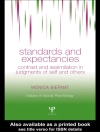‘Problem-Solving Therapy: A Treatment Manual is a laudable and distinctive resource that contributes to contemporary and exemplary psychotherapy in a big way.’— New England Psychologist
‘Through Problem-Solving Therapy: A Treatment Manual, Nezu and colleagues offer an excellent manual that has the potential to help a wide range of individuals cope with lifeís challenges. This book is an invaluable addition to any practicing psychologistís bookshelf.’— Psyc CRITIQUES
Problem-solving therapy (PST) has been increasingly used to treat a variety of health and mental health problems due to its flexibility and proven effectiveness. This text, written by the co-developers of PST, is a comprehensive and detailed manual of how to apply PST to a wide variety of populations and situations. It reflects the significant conceptual and clinical revisions that supersede earlier versions of PST, and is based on the authors’ clinical and research experience, the treatment outcome literature, and advances in related areas of psychology and neuroscience research.
The book offers specific treatment guidelines, sample client-therapist dialogues, clinical exercises and activities, homework assignments, client handouts, clinical case examples, and worksheets. These resources are based on a ‘stepped-care’ model of PST that takes into account the nature of a client’s problems, the intensity of these problems, the setting and treatment structure, and treatment goals. The manual offers clients four major ‘toolkits, ‘ which include a multitasking guide to overcoming ‘cognitive overload’ when under stress, a guide to overcoming problems related to emotional dysregulation, a guide to overcoming barriers to effective problem-solving through use of healthy thinking and positive imagery, and a guide to fostering effective problem-solving by designing and employing a rational plan. Digital accompaniments include patient handouts, worksheets, and toolkits. Intended for use by a wide variety of mental health professionals in multiple settings, the manual can also serve as a text for both undergraduate and applied graduate courses.
Key Features:- Describes an increasingly popular psychotherapeutic intervention that works for multiple client populations and can be combined with other treatment modalities
- Authored by the co-developers of PST
- Provides the most up-to-date, detailed guidelines to PST
- Presents treatment guidelines, case examples, and numerous clinical aids
- Includes digital components, such as patient handouts, homework worksheets, and toolkits
Содержание
‘
PREFACE
SECTION I. CONCEPTUAL AND EMPIRICAL CONSIDERATIONS
One: Introduction, Brief History, and Social Problem-Solving Constructs
Two: A Problem-Solving Approach To Understanding Psychopathology: A Diathesis-Stress Model
Three: Problem-Solving Therapy: Empirical Support and Flexibility of Applications
SECTION II. ASSESSMENT, TREATMENT PLANNING, & GENERAL CLINICAL CONSIDERATIONS
Four: Assessment and Treatment Planning Issues
Five: General Clinical Considerations
SECTION III. PROBLEM-SOLVING THERAPY: SPECIFIC TREATMENT GUIDELINES
Six: Overview of the Problem-Solving Therapy Process; Introductory Sessions; & The Case of ìMeganî
Seven: Toolkit #1. Problem-Solving Multi-Tasking: Overcoming Cognitive Overload
Eight: Toolkit #2. The S.S.T.A. Method: Overcoming Emotional Dysregulation and Maladaptive Problem Solving Under Stress
Nine: Toolkit #3. Healthy Thinking and Positive Imagery: Overcoming Negative Thinking and Low Motivation
Ten: Toolkit #4. Planful Problem Solving: Fostering Effective Problem Solving
Eleven Guided Practice, Future Forecasting, & Termination
REFERENCES
APPENDICES
Problem-Solving Test: Scoring Instructions
Patient Handouts
- Problem-Solving Worksheets
- Brief ìLessonî Plans
Об авторе
Thomas J. D’Zurilla, Ph D, University of Illinois at Urbana-Champaign, is Professor Emeritus in the Department of Psychology at Stony Brook University.












